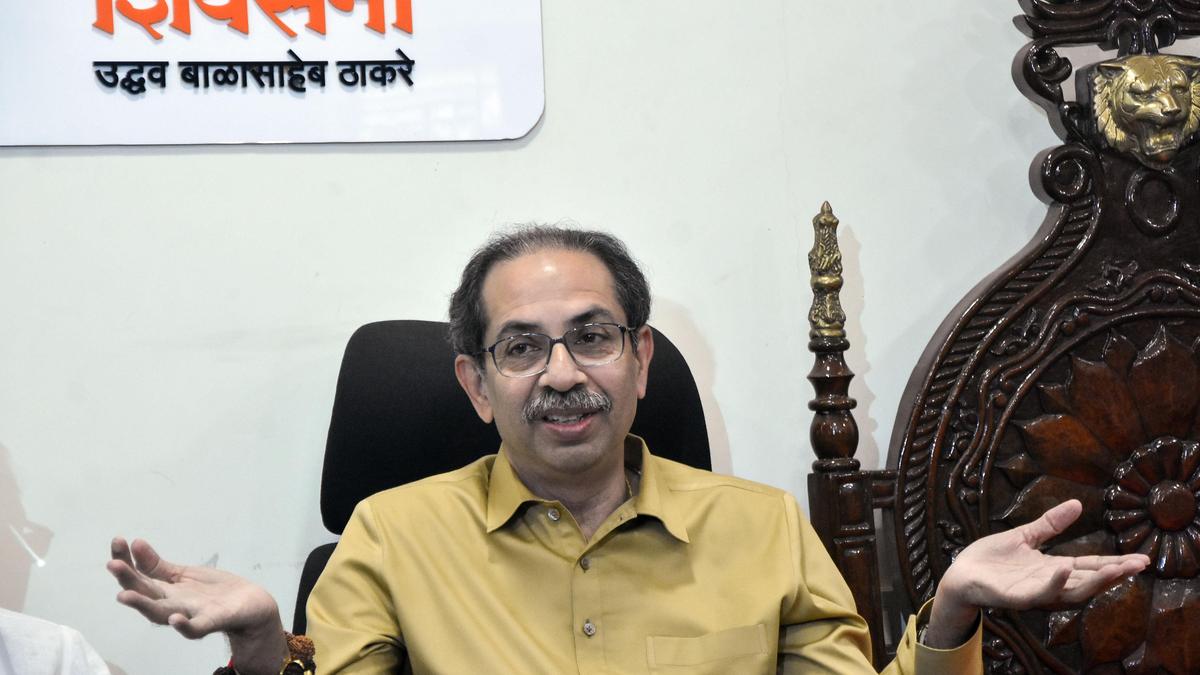ARTICLE AD BOX
Last Updated:November 05, 2025, 12:42 IST
Across 24 states and union territories, at least half of the farmland now shows low organic carbon. In 27 states, more than 90 percent of samples were deficient in nitrogen.

Across 24 states and union territories, at least half of the farmland now shows low organic carbon. In 27 states, more than 90 percent of samples were deficient in nitrogen (Image: Canva)
India’s soil, once the quiet engine of its agricultural success, is showing unmistakable signs of strain. A new assessment by the Centre for Science and Environment (CSE), based on over 1.3 crore soil samples collected between 2023 and 2025 under the Soil Health Card programme, has found widespread depletion of key nutrients across the country.
Nearly two-thirds of the samples tested low in nitrogen, and almost half lacked sufficient organic carbon – both essential for healthy crop growth. The findings point to a pattern of long-term soil fatigue, raising concerns about productivity, sustainability, and the future of food security in India.
The results read like a diagnosis of a body worn thin. Sixty-four percent of the soils tested were found low in nitrogen, the most essential nutrient for plant growth. Nearly half were deficient in organic carbon, the heartbeat of living soil that supports microorganisms, holds water, and keeps crops healthy.
Phosphorus, another vital element, was found lacking in over 42 percent of the samples, while potassium deficiency was seen in about 14 percent. Together, these findings sketch a grim portrait of land that has given too much and received too little in return.
A Tired Land, from Coast to Desert
The soil tests covered every state and union territory in India under the Soil Health Card programme, which periodically collects samples from every district. Karnataka alone contributed over 4.8 lakh samples to this national dataset, providing a glimpse of how varied and uneven the crisis is within one state.
In Karnataka, more than 90 percent of soils tested low in nitrogen, and between 80 and 90 percent were found deficient in organic carbon. The worst fatigue showed up in the drier belts of north and central Karnataka—districts such as Kolar, Chitradurga, Belagavi, Kalaburagi, Vijayapura, Bidar, Yadgir, and Bagalkote.
By contrast, the western coastal districts—Udupi, Dakshina Kannada, and Uttara Kannada—still hold pockets of resilience. There, traditional farming practices, denser forest cover, and natural mulching from coconut and areca plantations have slowed down the soil’s decline.
Karnataka, in this sense, is a miniature version of India’s larger story: a nation of uneven exhaustion, where some lands cling to life while others turn sterile.
A Pattern Across India
The same fatigue repeats itself across India’s landscape. In Rajasthan, Gujarat, and Madhya Pradesh, the black and sandy soils are losing organic carbon faster than they can replenish it. Punjab and Haryana, which once symbolised abundance, now struggle with compacted soils stripped of nitrogen and aeration after decades of rice-wheat cycles and intensive irrigation.
Maharashtra and Uttar Pradesh have joined the list of high-risk states, with nitrogen deficiency reported in over 85 percent of their samples. The eastern and central states—Odisha, Jharkhand, and Chhattisgarh—have lost their natural fertility through deforestation and soil erosion.
Across 24 states and union territories, at least half of the farmland now shows low organic carbon. In 27 states, more than 90 percent of samples were deficient in nitrogen. This is no longer a regional or climatic anomaly. It is a nationwide decline.
How the Soil Lost Its Life
The story of soil degradation in India is decades in the making. The Green Revolution, while feeding millions, also set off a chemical dependence that slowly burned the life out of the land.
Year after year, farmers have turned to quick fixes—urea, DAP, and NPK fertilisers—to maintain yield. Each application pushes up production briefly, but the long-term effect is devastating. Over time, the microbes die, organic matter burns away, and the soil hardens.
Without organic inputs like compost, crop residues, and livestock manure, the land becomes biologically barren. Continuous monocropping prevents the soil from resting or rotating its nutrient cycles. In dry regions, topsoil erosion by wind and rain strips away the fertile upper layer.
In irrigated zones, overwatering leads to salinity and compaction. Farmers often notice this as soil that cracks easily or refuses to retain moisture. Scientists describe it as loss of soil organic matter, a sign that the earth’s metabolism is slowing down.
The Fertiliser Trap
When fertility drops, farmers understandably apply more fertiliser. But this overcompensation creates a dangerous cycle. India’s fertiliser use has tripled in the last two decades. Urea alone now accounts for the bulk of the input bill, with subsidies crossing two lakh crore rupees annually.
Ideally, soil nutrients should follow a nitrogen-phosphorus-potassium ratio of 4:2:1. In many Indian states, it has distorted to 8:3:1. Excess nitrogen acidifies the soil and leaches into groundwater. It contaminates drinking water and accumulates in crops, often without farmers realising it.
This is how a local farming problem becomes a national public health issue. Vegetables and grains grown in nutrient-depleted soils often contain fewer micronutrients – less zinc, less iron, less protein than they did decades ago. At the same time, residues of chemical fertilisers and pesticides quietly make their way into our food and water. The soil’s imbalance becomes ours.
Diagnosing Without Healing
The Soil Health Card programme, launched in 2015, was meant to be the solution. It provided farmers with a detailed report on their land’s nutrient levels and fertiliser requirements. In less than a decade, over twenty crore cards have been distributed across the country.
But diagnosis alone is not treatment. The follow-up has been inconsistent. Many farmers receive the reports but lack access to organic alternatives or training to restore soil carbon. Fertiliser sales, instead of decreasing, have only grown.
Agriculture departments are often understaffed and underfunded, and policy focus continues to tilt toward chemical inputs. The result is a paradox: India spends more than ever on fertiliser subsidies while its soils grow poorer each year.
Small Revolutions Beneath the Surface
Yet hope does exist in scattered fields. Andhra Pradesh’s Community Managed Natural Farming programme has shown that reducing chemicals and promoting bio-inputs can revive soil carbon and microbial life. In Maharashtra and Himachal Pradesh, experiments with biochar and compost-based restoration are gaining ground.
Sikkim, the first officially organic state, has recorded improved soil structure and better water retention. Some farmers in semi-arid regions have returned to millet and pulse rotations that nourish rather than drain the land.
These efforts are small, but they represent a shift in mindset, from extraction to renewal. The goal is no longer to force the land to yield, but to help it recover.
“Land-care practices such as composting crop residues and increasing organic matter are essential. There has to be government-led sensitisation so farmers can balance soil nutrition" says Dr Biswapati Mandal, Professor, Bidhan Chandra Krishi Vishwavidyalaya, West Bengal.
The Cost of Ignoring the Warning
Soil is not just dirt; it is the planet’s living skin. When it erodes, entire systems collapse. Degraded soils emit carbon instead of storing it, worsening climate change. Poor soils cannot hold water, making droughts harsher and floods more destructive. When topsoil washes away, rivers clog with silt, and food prices rise as productivity falls.
India’s Green Revolution made the country self-sufficient in food. Its next revolution will have to be about healing. The soil beneath our crops, our economy, and our identity is asking for rest, care, and organic matter.
If the country fails to rebuild its soil, it will keep pouring fertilisers into a body that can no longer absorb them. The CSE report is not just about percentages or samples. It is about the slow exhaustion of an ancient relationship between people and the land. For centuries, the soil fed India. Now, it is India’s turn to feed the soil.
First Published:
November 05, 2025, 12:42 IST
News india India’s Tired Soil: The Hidden Hunger Beneath Our Food Plate
Disclaimer: Comments reflect users’ views, not News18’s. Please keep discussions respectful and constructive. Abusive, defamatory, or illegal comments will be removed. News18 may disable any comment at its discretion. By posting, you agree to our Terms of Use and Privacy Policy.
Stay Ahead, Read Faster
Scan the QR code to download the News18 app and enjoy a seamless news experience anytime, anywhere.


 2 hours ago
6
2 hours ago
6








 English (US) ·
English (US) ·